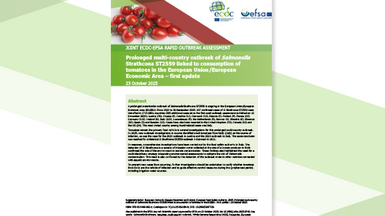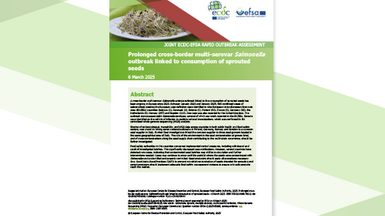Outbreak of Shiga toxin-producing E. coli (STEC) in Germany, May 2011
Shiga toxin-producing E. coli (STEC) is a group of pathogenic Escherichia coli strains capable of producing Shiga toxins, with the potential to cause severe enteric and systemic disease in humans. The full serotype is usually defined by determining both O and H antigens. There are around 200 different E. coli O serotypes producing Shiga toxin, of which over 100 have been associated with human disease. Two major Shiga toxin types (Stx1 and Stx2) have been associated with strains causing human disease. While the serotype O157:H7 is considered as clinically the most important, it is estimated that up to 50% of STEC infections are caused by non-O157 serotypes. STEC is of public health concern because of the potential for outbreaks and the risk of serious complications. Haemolytic uremic syndrome (HUS) is considered as the most common cause of acute renal failure in European children. Even if the clinical presentation of non-O157 STEC infections may vary, they can be as virulent as O157:H7 infections.
Executive Summary
ECDC has conducted a rapid risk assessment following the unusual increase of Shiga toxin-producing Escherichia coli (STEC) infections in Germany, with patients presenting with haemolytic uremic syndrome (HUS) and bloody diarrhoea.
To date, this STEC outbreak is significant with a very atypical age and sex distribution of the cases and the exposure being limited only to Germany.
Currently there is still no evidence that any potential contaminated food product would have been distributed outside of Germany. Thorough investigations ongoing in the country aim at identifying the source of infection, and are crucial to further determining the scope and magnitude of this risk.
Rapid identification of potential cases linked to this outbreak, within Germany or among persons who have travelled to Germany since mid-April/beginning of May, is essential to prevent the development of severe disease. Secondary clusters of cases from person-to-person exposure may occur and thus personal hygiene messages are important.
ECDC continues to monitor closely this event, in collaboration with the Member States, the European Food Safety Authority (EFSA), the European Commission and World Health Organization (WHO).







